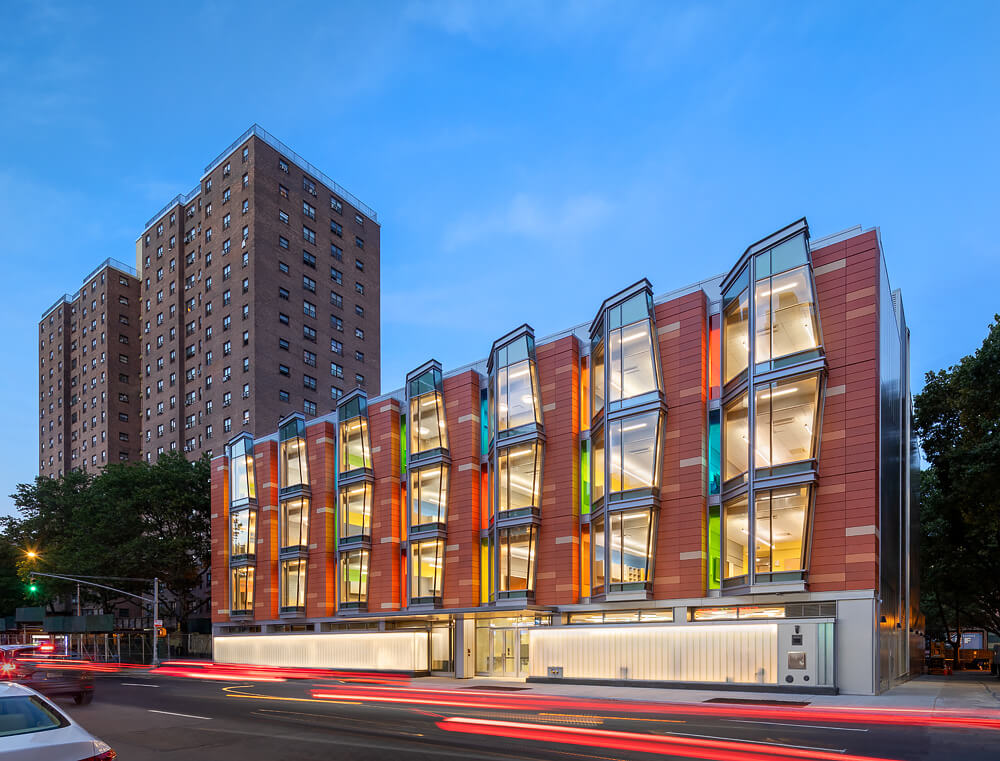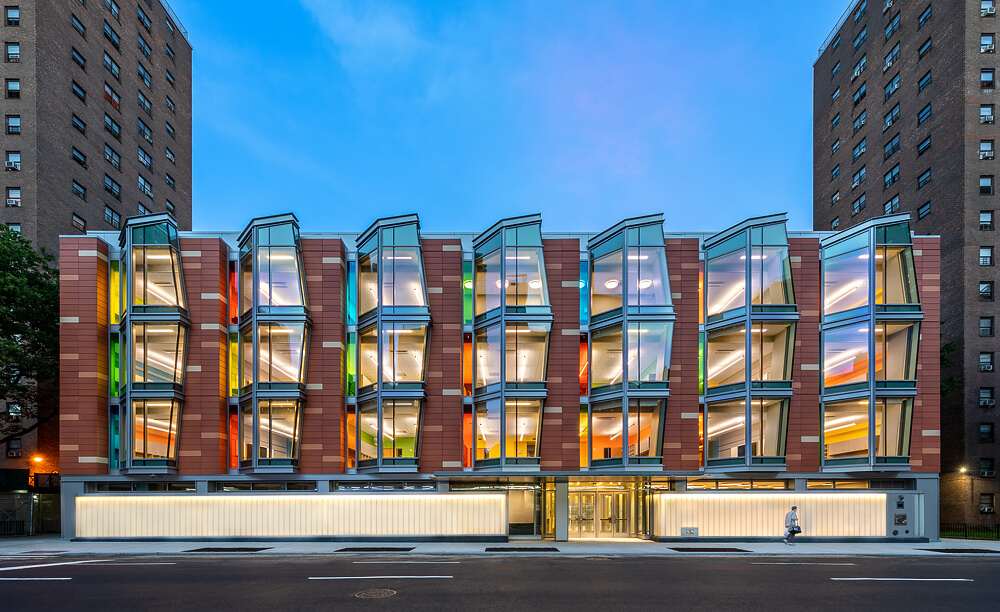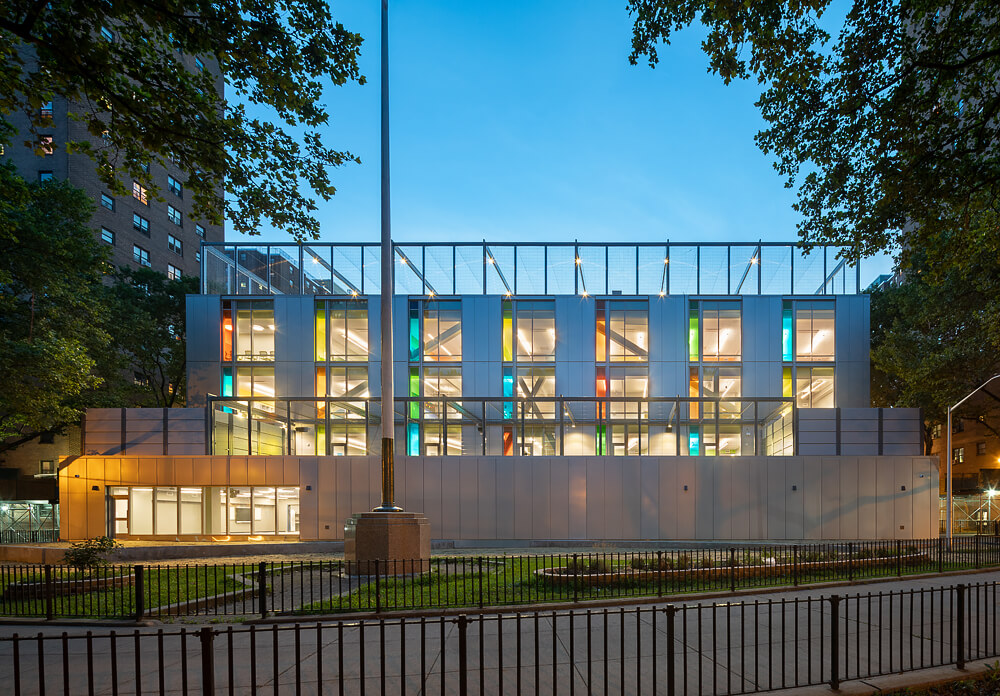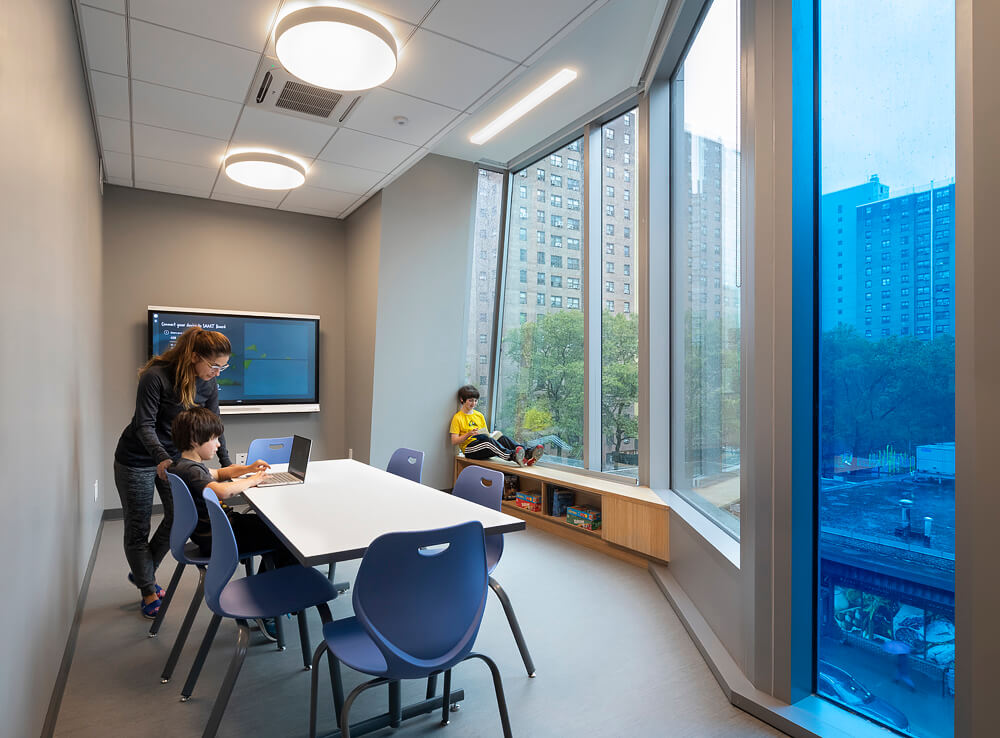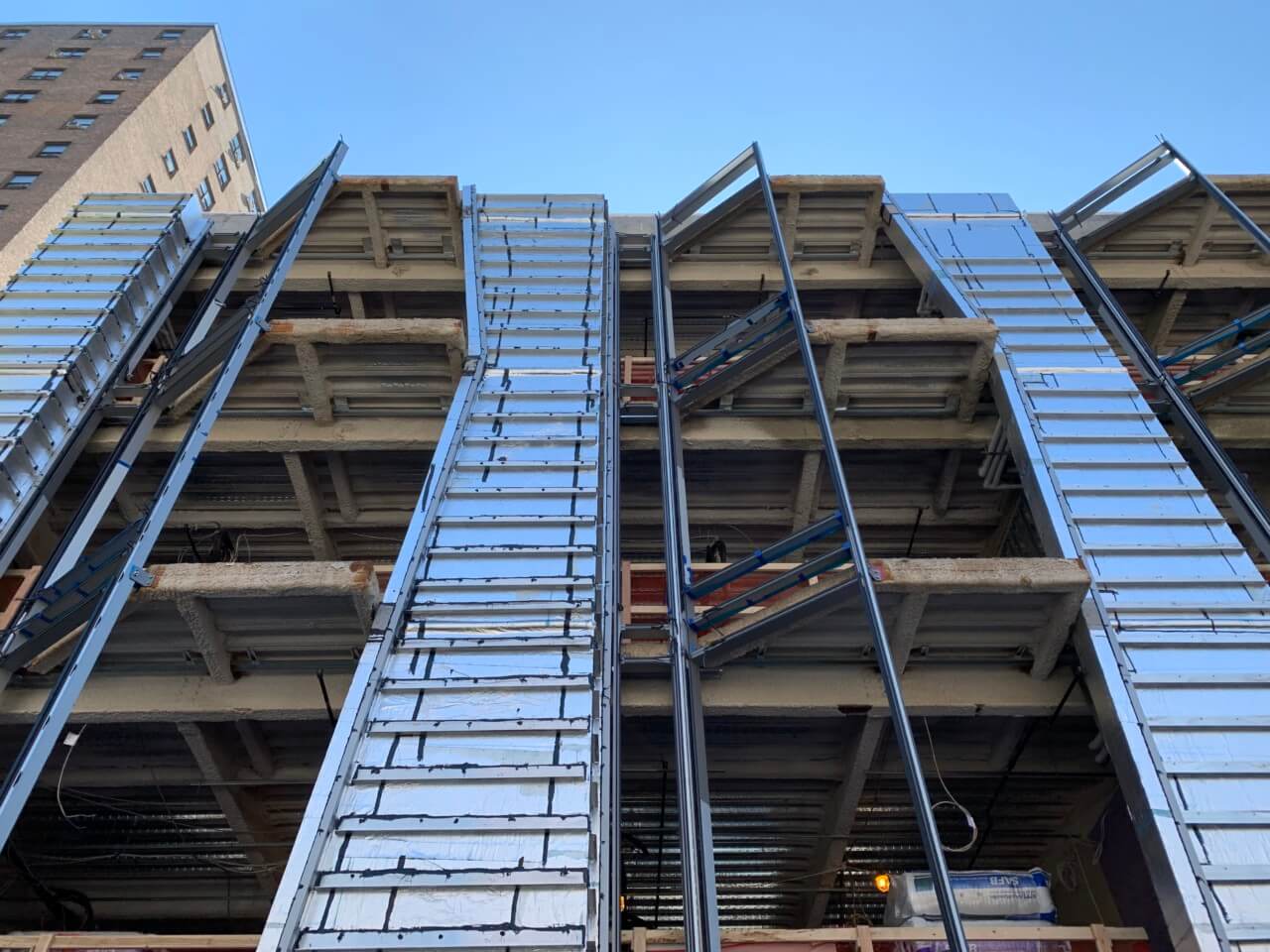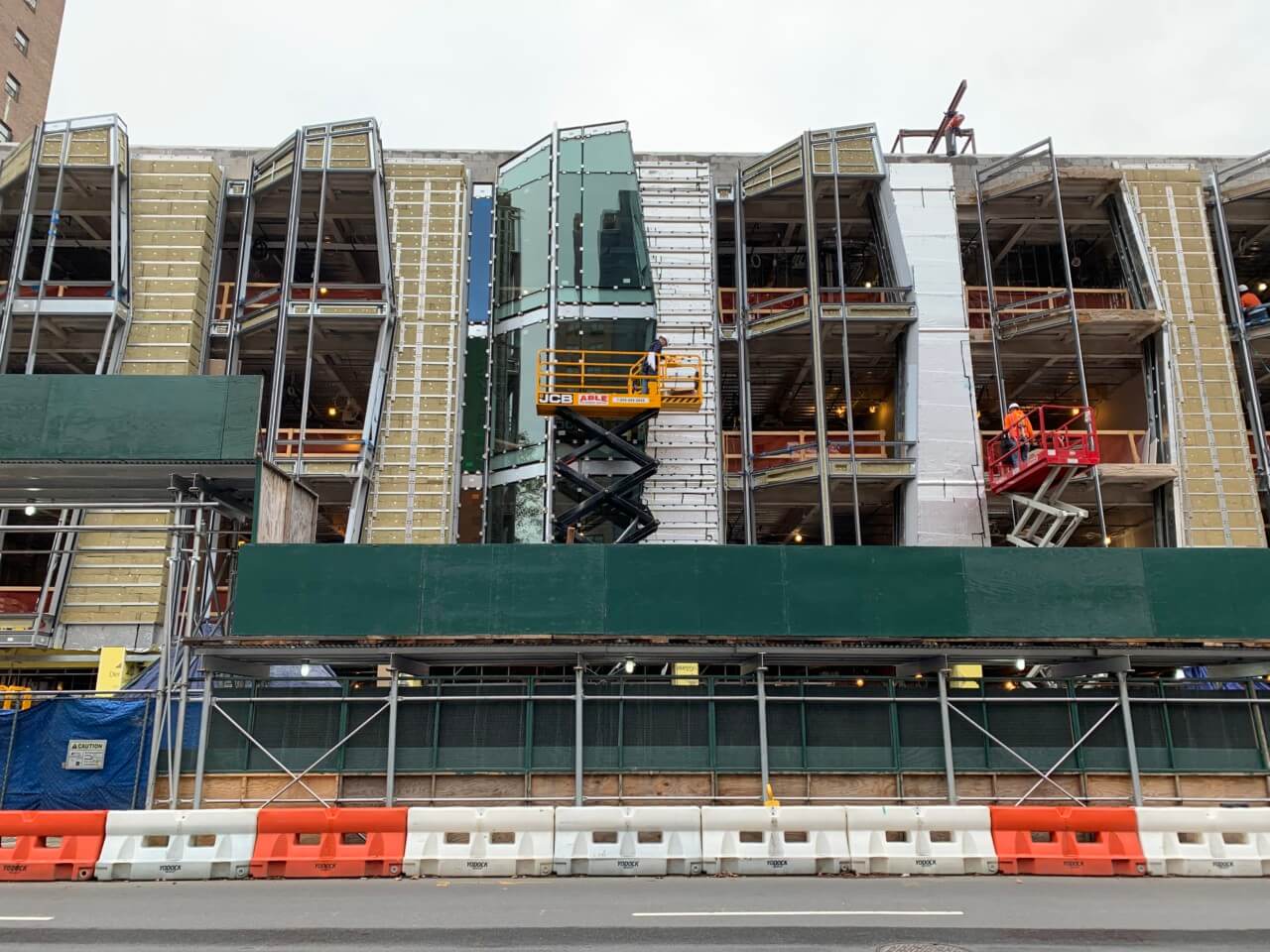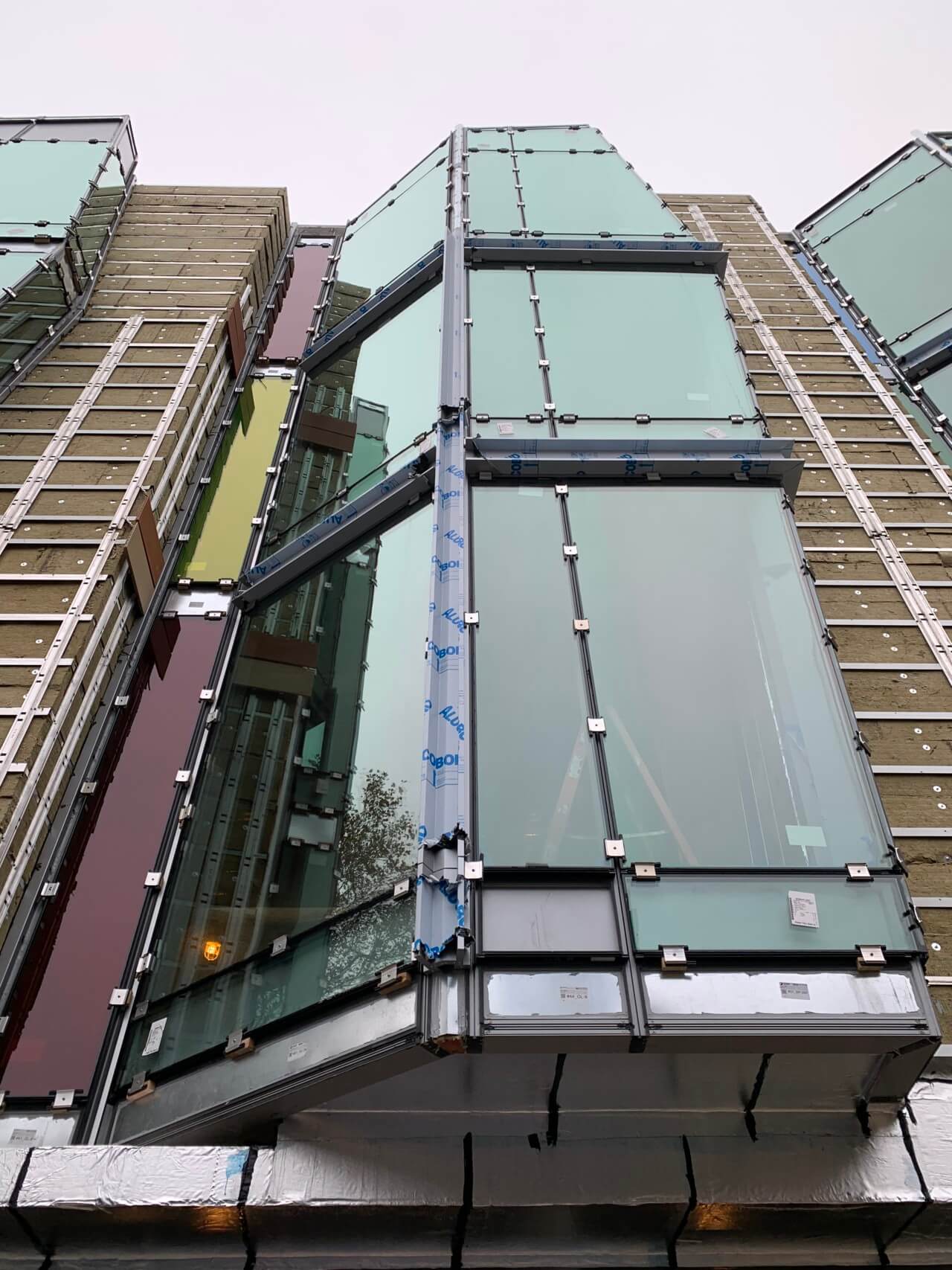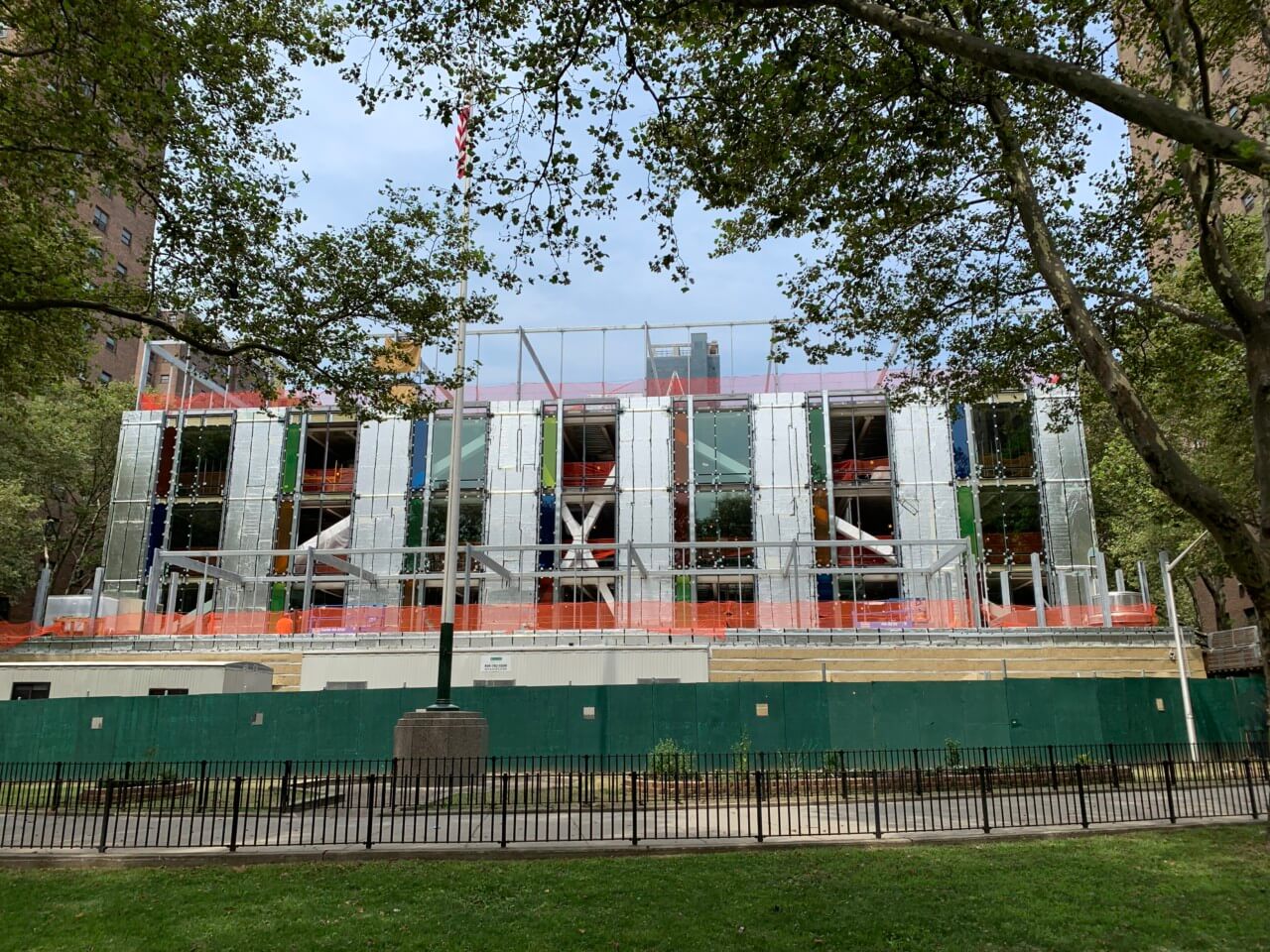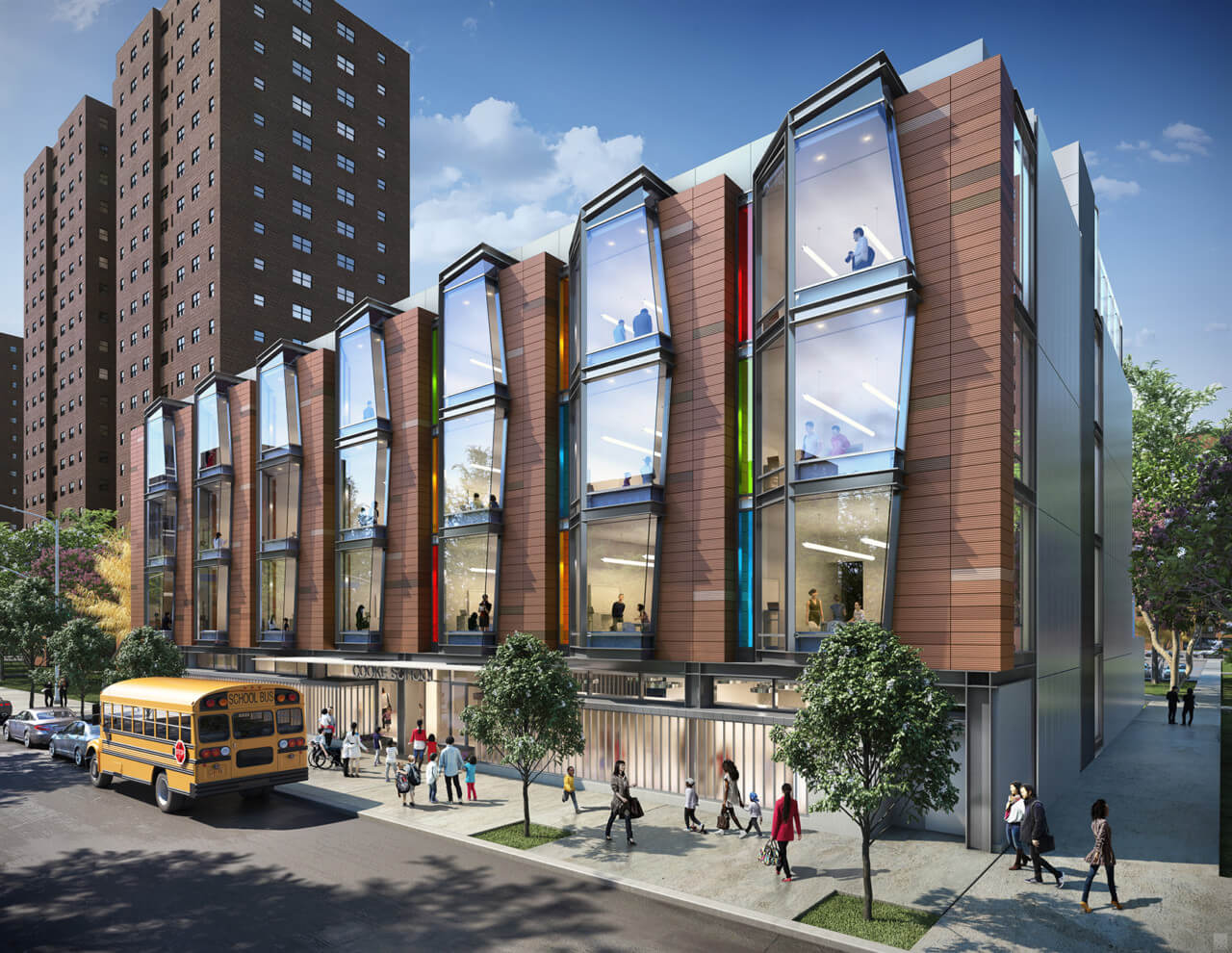Unusual among the sardined building fabric of Manhattan, PBDW Architects’ freestanding Cooke School & Institute takes full advantage of the site to implement a thoughtful design that can be appreciated from all four sides of the structure. With bulbous glass set in a terra-cotta exterior, the building brings together previously split school programs into a unified space while creating a distinctive neighborhood presence. The four-story, 69,000-square-foot Cooke School & Institute provides academic programming, therapy, and support for K-12 students with developmental disabilities in East Harlem regardless of income. The uplifting design aims to fill classrooms with light, fill safe outdoor spaces with room for play, and provide thoughtful amenities to bring together the community.
With a multi-material facade developed with the help of more than one manufacturer, PBDW quickly realized that cohesive integration of these elements was critical to the success of the project. Seven geometric and extruded glass bays form the curtain wall that meets the rectangular terra-cotta rainscreen, all aligned to wrap around the main exterior and interface with metal paneling manufactured by CENTRIA. The evocative bay window articulation, manufactured by Erie Architectural Products, is simplified and flattened across the rear facade.
To facilitate this seamless integration, PBDW worked with Pennslyvania-based Facade Technology who oversaw the entire envelope outboard of the exterior sheathing. “Facade Tech coordinated the opportunity for PBDW to visit Erie Architectural Product’s manufacturing plant in Windsor, Ontario. During that visit, the project team observed first-hand the production process and inspected components fabricated for the project. Erie had fabricated a mockup of the corner of the custom-designed bay window at the junction point where the geometry shifts from extending outboard to extending inboard. This critical juncture includes the various trapezoidal mullions, as well as structural glazing and integrated formed metal panel trim pieces,” explained Erica Gaswirth, AIA, senior associate at PBDW Architects.

The design further exemplifies that good practice doesn’t always need to break the bank. Standardizing the window bays as well as placing the unique materials where they would have the most impact (on the highly trafficked sides of the building) allowed PBDW to shape solutions within a limited construction budget. Color was also used as an inexpensive way to individualize each classroom and shine life through the facades.
“Another challenge was the monotonous surrounding context. With taller public housing towers, which are set back from the sidewalk surrounding the site, there was little street engagement along this block. PBDW strived to design a building that would contribute positively to the neighborhood while being relatable at a human scale. The long facade is broken down into a series of bays which reflect the interior program but also create a rhythm. Materials were selected to provide durability for maintenance and upkeep. For example, the insulated panels along the base of the building have a thicker gauge metal skin and are coated with an anti-graffiti coating to better withstand daily wear and tear. With abundant glazing and colored glass, the school is a little gem glowing along Madison Avenue, and is a bright and vibrant addition to the neighborhood,” added Ray Dovell, AIA, partner at PBDW. At four stories, the Cooke school is much smaller than its towering neighbors. The three-dimensional characteristic reads strongly and attempts to bring a more human scale to the street wall.
PBDW’s vibrant and purpose-built Cooke School & Institute opened to students in the Fall of 2020.
